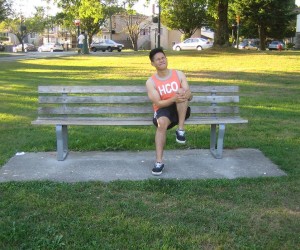There are various forms of arthritis that can affect the feet and ankles, but the most common form is osteoarthritis. It is important to note that osteoarthritis involves wearing down of the protective cartilage of the joint which progresses to the narrowing of the joint space as well as bone spurs around the joint.
Osteoarthritis can develop on any of the foot joints where there is surplus mobility or weight-bearing pressure. In addition, it regularly affects the toe or ankle joints. Long-standing stress is the usual cause of osteoarthritis but acute form of trauma such as sports, fractures or sprains can also be possible causes.
What are the symptoms?

- There is joint pain that worsens with activity
- Stiffness of the joint especially after a period of inactivity
- Joint is “creaky” with movement
- Limited joint movement which worsens as the condition progresses
- Occasional swelling
- Weakening of the joint due to reduced muscle mass that surrounds it
- Enlargement of the joint
Conditions that increases the risk for osteoarthritis
Flat feet typically causes the foot joints to become too mobile or lax, thus they are less stable and prone to wear and tear. It is not uncommon for flat or hypermobile feet to develop arthritis in the joints of the tarsal bones or joints of the toes. It is interesting to note that having flat feet can increase the risk of osteoarthritis of the knee.
High-arched feet lead to inadequate joint movement to absorb the ground pressure efficiently. This increases the stress which leads to the development of osteoarthritis in the foot joints, ankle and even the hip.
Aside from flat feet or feet with a high arch, any irregularity in the arrangement or functionality of the foot can result to the development of osteoarthritis. A good example is an unusually long second metatarsal bone which can lead to the development of hallux limitus which is a condition that leads to arthritis changes to the big toe joint.
An abnormal foot function can cause a bunion or hammertoe which can also lead to arthritis changes. Using high-heeled shoes can lead to abnormal stress on the foot, thus considered as a factor in the development of osteoarthritis, particularly in the toe joints.
Treatment of osteoarthritis
Osteoarthritis is diagnosed by the evaluation of the symptoms, physical examination and results of an X-ray. The treatment options include the following:
- Cortisone injection to reduce pain and inflammation
- Physical therapy to improve range of motion and restore strength
- Oral anti-inflammatory or pain medications
- Using a shoe with a curved sole (rocker sole) can help reduce stress on the toe and ankle joints.
The treatment by a podiatrist typically includes arch supports, orthotics or braces to increase foot or ankle stability as well as reduce stress on sore areas of the foot. Surgery might be required if the conservative measures fail. The procedure involves the removal of bone spurs or restores the joint alignment.
